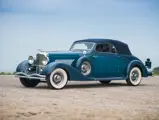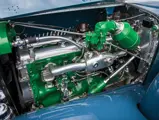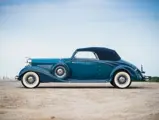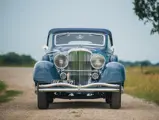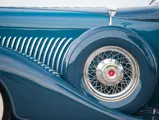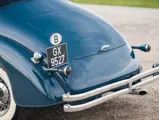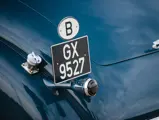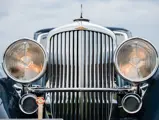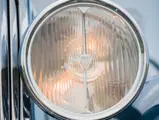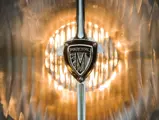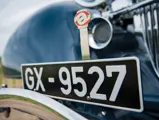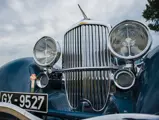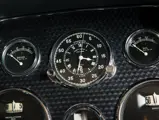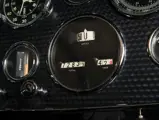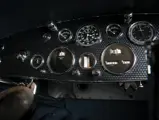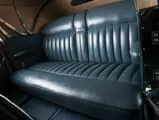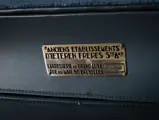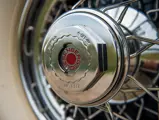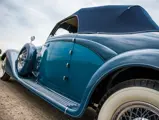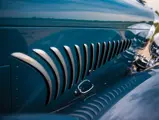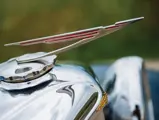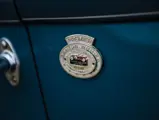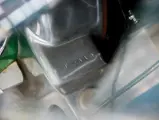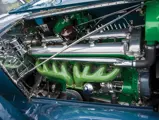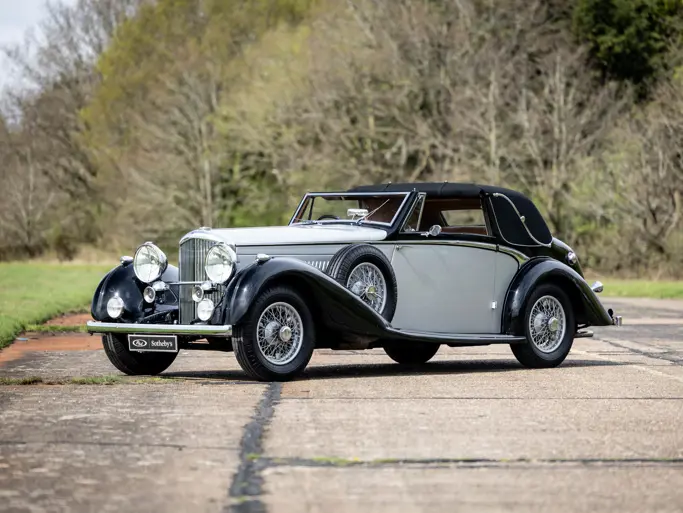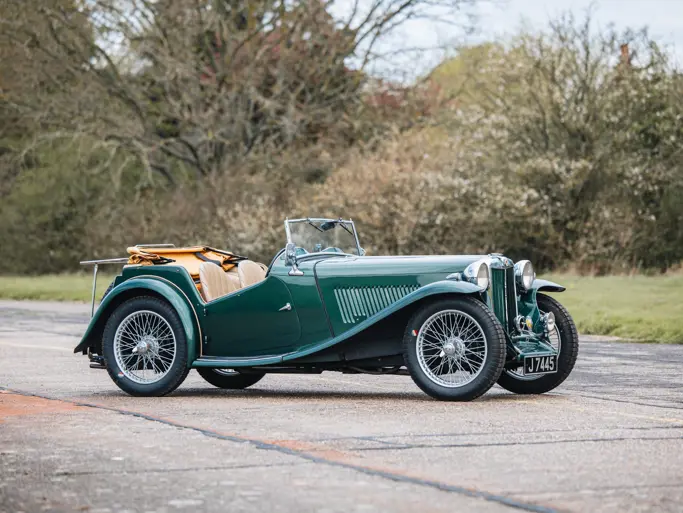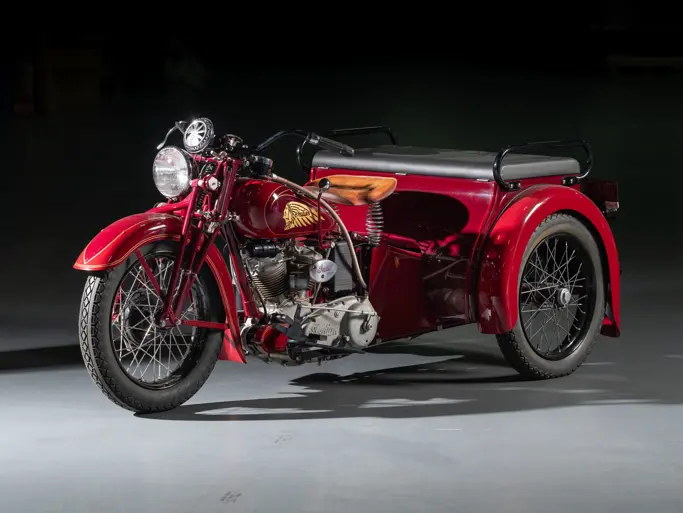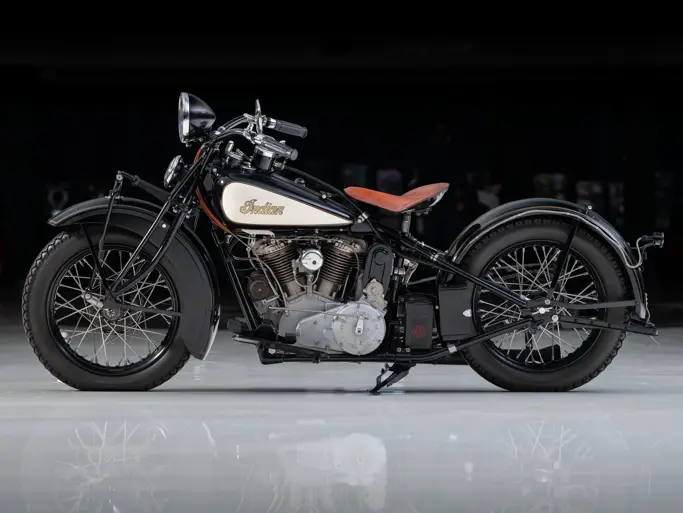Hershey 2017
1935 Duesenberg Model J Cabriolet by d'Ieteren
The Thomas F. Derro Collection
{{lr.item.text}}
$1,485,000 USD | Sold
 | Hershey, Pennsylvania
| Hershey, Pennsylvania
{{internetCurrentBid}}
{{internetTimeLeft}}

- Offered from The Thomas F. Derro Collection
- One-off European coachwork on the long-wheelbase Model J chassis
- Matching numbers with original frame, firewall, engine, and body
- Exceptional restoration by Brian Joseph’s Classic & Exotic Service
- Multiple national award-winner with striking beauty
- Auburn Cord Duesenberg (ACD) Club Certified Category One (D-081)
The final standard Model J shipped to Europe, chassis number 2548 was mounted with engine J-519 and tested by the factory on 11 September 1933, then shipped on 9 February 1934. It arrived, like most European Duesenbergs, at E.Z. Sadovich’s Motors Deluxe dealership in Paris, which commissioned its coachwork from the renowned Belgian firm of d’Ieteren.
The body that d’Ieteren produced, striking in its clean curves, manages to both conceal the size of the car while also leaving an impression of power and beauty. The windshield wraps cleanly into the doors, in the style of a Dietrich Packard, while the raised top forms a cohesive curve that continues down into the streamlined rear deck. Interestingly, while many Duesenbergs of the period were largely skinned in aluminum, the d’Ieteren body is all steel, resulting in exceptional strength and rigidity. The body was originally finished in two shades of tan, with a dark blue frame, and, interestingly enough, sported Model J rear bumpers on both ends.
Motors Deluxe delivered the car in October 1935 to a Monsieur Addes, who had homes in the Netherlands and at the Hotel Majestic on Paris’ Avenue Kleber. It is believed that the Duesenberg subsequently moved to his Dutch home, as its second owner, L.R. Boissevain, also had a residence in that country.
Post-World War II, the Model J was exported to North America and purchased by Arthur James “Jim” Hoe, of the Hoe Sportcar Garage in Weston, Connecticut, the most well-known Duesenberg specialist of his time. Hoe subsequently sold the car to William Crossett of Pennsylvania, an early and highly regarded member of the Classic Car Club of America, in whose name the CCCA now bestows an award for the finest Classic completing its first CARavan.
Mr. Crossett participated in several early CARavans with his Model J, as did the next owner, the equally well-known Bill Kranz of Bay Village, Ohio, who purchased the car from Mr. Crossett in 1973. Mr. Kranz eventually elected to have the Model J restored, spending $9,000, a fortune at the time, to paint it two-tone red with a tan interior. In this form the car won many awards, was photographed for numerous books and calendars by the late Nicky Wright, and, in 1986, joined the late Rick Carroll’s extensive Duesenberg collection in Jensen Beach, Florida.
After Mr. Carroll’s passing in 1989, his stable was sold at a landmark sale held by Sotheby’s in West Palm Beach. The Duesenberg was acquired there by Jerry J. Moore of Houston, Texas, the most famous Model J connoisseur of his era, who eventually owned some 35 examples. He displayed the car until the late 1990s, then sold it to Dr. Joseph Murphy of Bethlehem, Pennsylvania.
By this time the car’s original restoration was showing its age, and Dr. Murphy commissioned Duesenberg authority Brian Joseph of Classic & Exotic Service in Troy, Michigan, to return it to original condition.
In a recent conversation Mr. Joseph noted that the car remained very solid, thanks to d’Ieteren’s exceptional workmanship, and that all of the original sheet metal was able to be preserved aside from the very edges of the doors and fenders. The entire chassis and running gear were fully restored, with the frame being finished before the body was installed, just as d’Ieteren had done it in 1935. The body itself was finished in an elegant and subtle two-tone blue, hues chosen by General Motors designer David Holls, and regained its original bumper arrangement and correct European-delivery Marchal headlamps. Dr. Murphy exhibited his Duesenberg at the Pebble Beach Concours d’Elegance, winning 2nd in Class in 1998.
The cabriolet was acquired by Thomas F. Derro in 2000, and has remained in his wonderful collection for 17 years. During that time it was only selectively displayed, always at major East Coast concours, including at Greenwich in 2003 and 2007 (Chairman’s Choice), and at Radnor Hunt in 2006 (Radnor Award). The car wears a CCCA Senior Premier badge, no. 96, from Mr. Kranz’s ownership.
Very well known in Model J circles, the d’Ieteren cabriolet is pictured in Dennis Adler’s Duesenberg (p. 261), Griffith Borgeson’s Errett Lobban Cord (pp. 246–247), Josh B. Malks’ Illustrated Duesenberg Buyer’s Guide (p. 118), and Fred Roe’s Duesenberg: The Pursuit of Perfection (p. 221). Its restoration remains virtually flawless and show-worthy, and indeed, when moved from the Derro Collection recently, it fired right up and drove well, indicative of the care that it has received.
European-bodied Duesenbergs are few and far between, and seldom have the smooth and sensual lines of this one-off, numbers-matching cabriolet, which has enjoyed only the finest of care by great American enthusiasts for the last six decades.

